Neil Thomas visits one of Shropshire’s best‑loved visitor attractions to meet just some of the volunteers who keep it on track.
Tourism and nostalgia so often go hand in hand. Consider how many visitor attractions tap into the past, feeding our affection for yesteryear. Shropshire – rich in architectural history – has long been a magnet for those who want, for a short while at least, to lose themselves in a bygone age.
Ironbridge, for instance, has a string of museums – not to mention a bridge – that celebrates its place in world history. Amongst the most perennially popular of all nostalgia-infused tourist attractions is the heritage railway, examples of which are to be found across Britain. Bridgnorth, of course, boasts one of the very best!
Severn Valley Railway (SVR) is one of the UK’s most popular heritage railways, drawing up to 250,000 visitors a year from all over the country.
Its perennial appeal lies in old-fashioned carriages, some with compartments, pulled by steam or early diesel locomotives along a 16-mile single track from Bridgnorth to Kidderminster and back. It is a leisurely journey through some of the loveliest Shropshire and Worcestershire countryside, with stops at picturesque stations along the way. In-carriage dining, special themes and entertainment packages add to the pleasure, making for a special day out with family and friends.
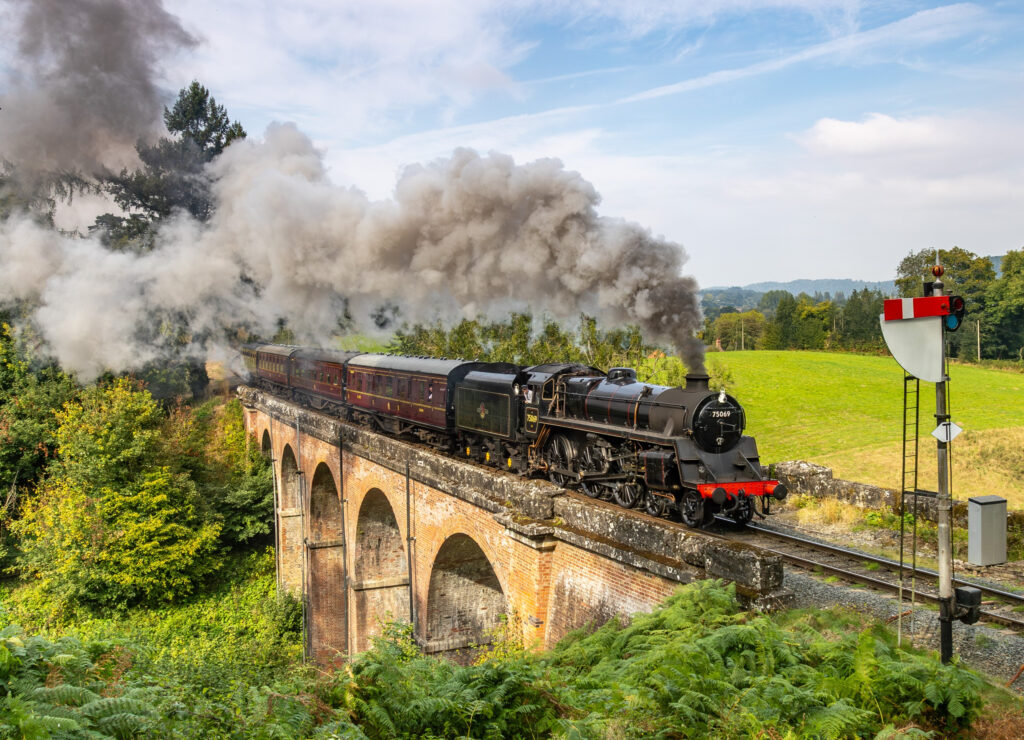
One of Shropshire’s – and indeed Worcestershire’s – tourism flag-bearers, SVR is on the cusp of a major milestone, for it celebrates its 60th anniversary in 2025. It seems the perfect moment to reflect on its enduring appeal to people of all ages, to look at its history, see what’s in store over the next 12 months and to celebrate its army of volunteers – many with decades of service – without which the SVR simply would not exist.
Bridgnorth Station Master Chris Thomas is a case in point. In fact, Chris can enlighten us not only on the role of a volunteer but on the SVR’s history, the bulk of which he has experienced at first hand in his 55 years of service!
Oddly enough, for Chris it all began growing up in Glasgow – 300 miles from Bridgnorth!
“I first visited in 1967-68. I was staying with my grandmother in Birmingham and we had a day out. In those days the railway was not fully open but there were special services on bank holidays or weekends.”
The mechanically-minded teenager fell in love with the nascent steam train attraction and with Bridgnorth.
“I first worked here as a volunteer in 1969, cutting hedges and doing general cleaning up work because it was heavily overgrown after years of disuse.”

Over the years, his many practical skills have continued to benefit the SVR. So too, his energy. At 72 Chris shows no signs of slowing down. Way past retirement age, he continues the day job as an electrical engineer in the renewable power industry and is currently working on three major windfarm projects.
Another hobby, next to the SVR, is model-making, which gives an insight into what makes him tick. “I can do without many things but please don’t take my toolbox away.”
As Station Master, he is in charge of the service’s smooth and safe running. “Passenger safety is paramount so we need to be vigilant at all times, particularly as there’s often many children around,” he explains. “It’s also important to ensure people enjoy their day out.”
His first job of the day is to test the fire alarms then inspect the toilets to ensure they are clean. He also does a fair amount of maintenance work. “I’ve been known to replace roof tiles or rod the drains on a few occasions,” he says with a smile.
Chris lives in the Bridgnorth area with wife Sue, who also devotes much time to the SVR. They are among 1,600 volunteers of all ages, from all walks of life and many different parts of the country.
Diesel locomotive driver Lawrence Mortimer has been involved with the SVR since 2003, when he joined its Junior Club for 10-to-14-year-olds.

“We were gardening, painting fences, that kind of thing. There were about 40 of us when I joined and many are still involved.”
Lawrence always wanted to work on the operating side, graduating to fireman on steam trains in 2010 and qualifying as a diesel driver in 2019.
“There was a lot of shadowing of senior drivers, 12 full days of driving under supervision, lots of practical experience and three separate exams. Even so, the first time you drive on your own, it’s scary,” he says with a smile. “You realise you’re responsible for the safety of a lot of people.”
“It’s really worthwhile. There’s a real sense of teamwork among the volunteers; many are my closest friends. We’re like a family,” says the 31-year-old from Kidderminster.
Lawrence’s day job is devising timetables on the main rail network. “I really enjoy the planning aspect of it. Driving is my hobby.” Unlike his partner Antonia – a professional driver on the main rail network!
Ticket collector John White, from Bridgnorth, has been a volunteer for the past five years.

“I found I had more time on my hands, was looking for something to do and thought I’d come down and give it a go,” explains the retired computer engineer. “I enjoy meeting and chatting to passengers and the sense of teamwork with the other volunteers.”
One of the most demanding volunteer roles is that of signal box operator. A complex array of levers and dials, a multi-station telephone system and detailed log book all need to be kept on top of, requiring high levels of expertise and powers of concentration for many hours at a time, that can only really come from training and experience doing the job.
“It might look complicated but it’s all very logical when you understand it,” explains Dianne Turner, whose career as an engineer with Rolls Royce helped in developing the skills set needed for work in the signal box. It is another role that requires the volunteer to pass exams, with safety very much at its heart. Dianne is also one of a sizeable number at SVR willing to travel to indulge her hobby, coming over from Derby three times a month.
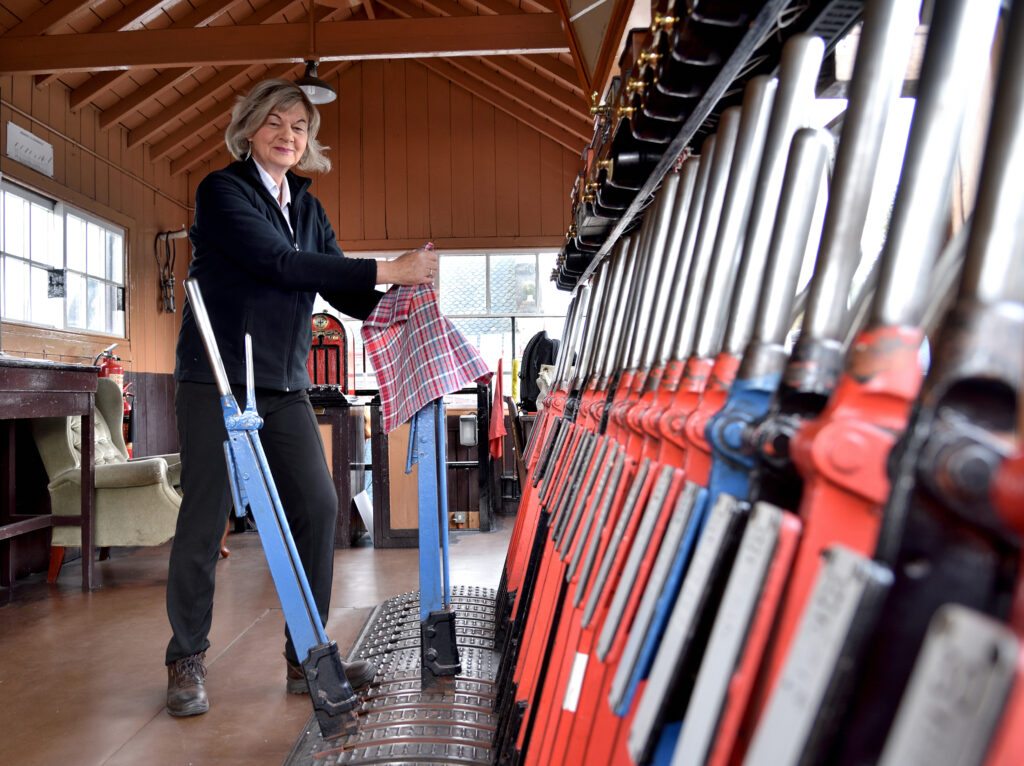
“I do enjoy it and come as often as I can, but I’ve got six great grandchildren and they keep me pretty busy.”
One of the messiest jobs is fireman on the steam engines, riding alongside the driver to, amongst other duties, shovel coal into the small furnace to run the boiler. It is hard, hot work – and Bridgnorth’s Oliver Speke loves it.

Oliver got involved in the SVR as a teenager, carrying out odd jobs, and appreciates his hobby not least because it represents such a striking contrast to his career.
“I’m a recruitment officer for Bangor University,” he explains with a smile. “Working on the steam trains is so different, it is the ideal past time.”
Along with the drivers, firemen seem to be amongst the most photographed volunteers in the service. During our 10-minute chat, innumerable passengers pointed a camera in Oliver’s direction as he busied himself preparing the engine for departure.
“It’s quite nice – all part of people’s day out,” he says smiling.
Steam train driver Michael Matthews is another volunteer who travels from out of the immediate area, though Norton Canes near Cannock is relatively nearby. He joined the volunteering team in 1992, after his elder brother got him interested in the SVR.
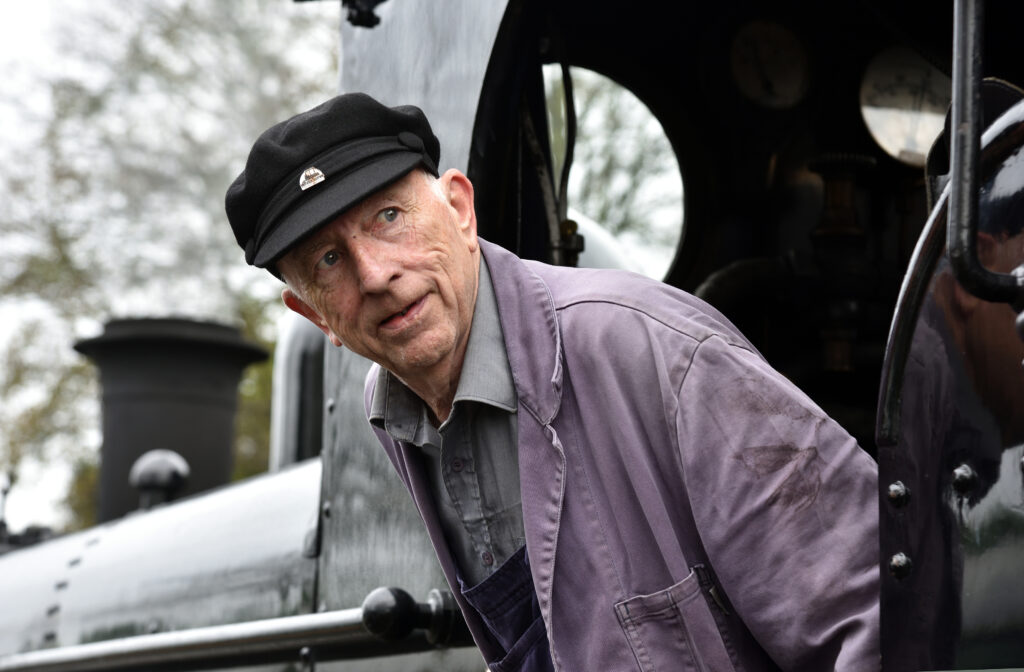
The retired engineer has been a qualified driver for seven years, having previously been a fireman.
“The camaraderie amongst the volunteers is great. As a driver, you are responsible for the safety of thousands of people a year. It’s enjoyable but in some ways stressful.”
There is not much, I suspect, that you can tell Steve Catanach about stress. He worked for 30 years on the London Underground, as an HR manager, duty manager and project director on the Jubilee Line. He was involved in the major logistical operation surrounding the 2012 London Olympics and in supporting the huge team of staff in the aftermath of the 7/7 terrorist attacks in 2005.
Life in Ludlow, to where Steve retired, certainly offers a change of pace. “But the railway gets into your blood,” he says with a chuckle. Which prompted him to offer his services to the SVR. Steve will probably be the first volunteer you meet on arrival at Bridgnorth. He’s in the ticket office.
In contrast to Chris Thomas, with his 55 years of service, Steve says: “I’ve been here six weeks.
“I’m enjoying it so far and I don’t think I’ve made any mistakes. None they’ve told me about anyway,” he adds with a broad smile.

It is worth repeating that without the tens of thousands of hours of unpaid work by its dedicated volunteers, Severn Valley Railway would not exist. Though it has a £6.5million annual turnover, costs are eyewatering – and often at the mercy of uncertain global markets.
“You’ve seen the price of coal increase from £120 per ton to £475 per ton because of the war in Ukraine,” Chris Thomas explains. “It costs £4,000 to fill a loco with coal just for one journey!
“Then there are building costs, rebuilding costs, everyday maintenance costs. The cost of water, which is metered, has gone up and you need to boil water for steam. Oil and paint are costly.”
The result of all this is a never-ending challenge to keep fares as low as feasibly possible while avoiding the money troubles that have plagued visitor attractions, including several heritage railways, across the country.
“It is a particularly difficult time for this sector, but then Severn Valley Railway has had funding challenges before and always comes through. I can remember times when things have been so bad that volunteers have had a whip round in the pub. And we’re still here!”
Much of that is down to the SVR’s enduring appeal to all ages.
“For children it’s an adventure. For older people there is a hefty amount of nostalgia involved,” Chris says. “They remember when life was slower and people had time for one another. A lot of people who visit are passionate about the history of it.”
That history incorporates the Victorian heyday of railway travel. Opened in 1862 after a nine-year building project, it was originally part of the much longer line from Shrewsbury to Hartlebury, just under four miles south of Kidderminster. Initially there were 15 stations, with the Bewdley to Kidderminster loop added in 1878. Services were run by GWR (Great Western Railway).
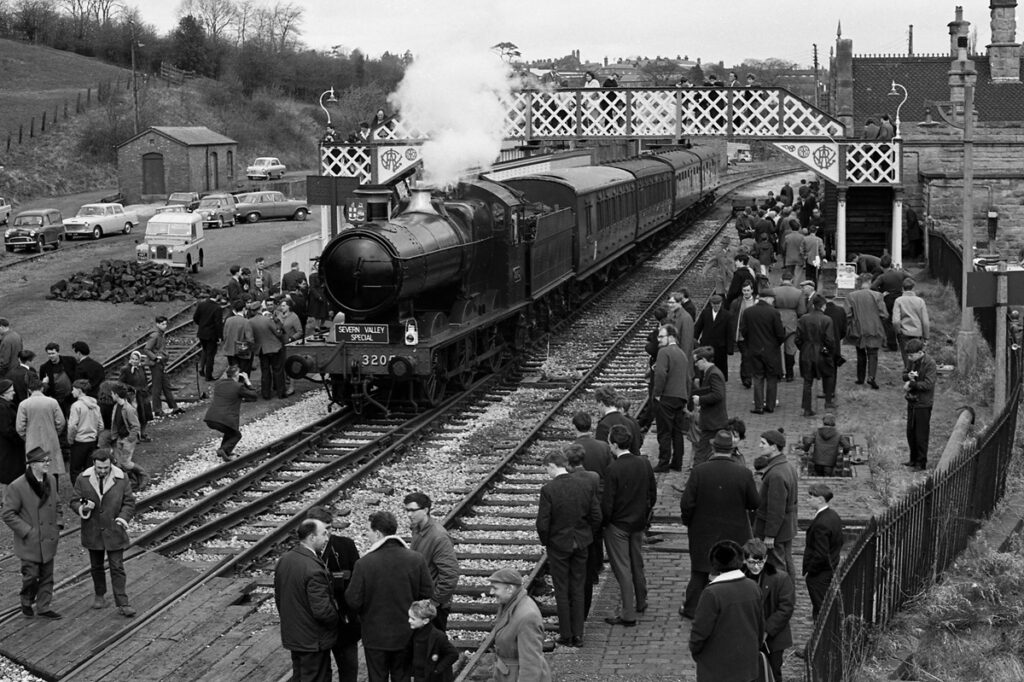
Rail travel declined in the postwar years in favour of the car and nationalization of the railways in 1948 failed to reverse the trend as passenger numbers continued to dwindle. The line was eventually closed in November 1963.
Rail enthusiasts continued to lament its loss, though, and within just 20 months, the idea had been hatched – in a pub, of course – to re-open it as a heritage line. By May 1970 it had achieved its goal, thanks to the efforts of the Severn Valley Railway Society, which invested more than £25,000 (nearly half a million in today’s money) and thousands of hours of voluntary labour.
The attraction initially had four locomotives and ran regular services between Bridgnorth and Hampton Loade. Over the past 54 years, the line has been extended, the rolling stock expanded, stations developed and many crowd-drawing events organized.
So much for the history. What of the future?
Well, the immediate future involves Christmas and New Year. Starting from Saturday November 30, the SVR’s hugely popular Santa Trains will be departing Kidderminster on a magical steam train journey to Arley. Each group has a private compartment or reserved table, and after arriving at their destination passengers disembark to watch a fabulous panto show in which mischievous elves Jingle and Jangle join Santa on stage for plenty of festive fun. Each child receives a gift and services run at weekends in December and on Christmas Eve.
Departing from Bridgnorth, the Enchanted Express is a captivating on-train interactive experience, based on the poem ‘Twas the Night before Christmas, narrated by the voice of Dame Julie Walters. On the journey, a host of costumed characters including Santa Claus will visit each group’s private compartment. There’s a gift for every child and services start on November 30 and run at weekends through December. For those looking for other pre-Christmas treats, there is a choice of festive dining experiences.
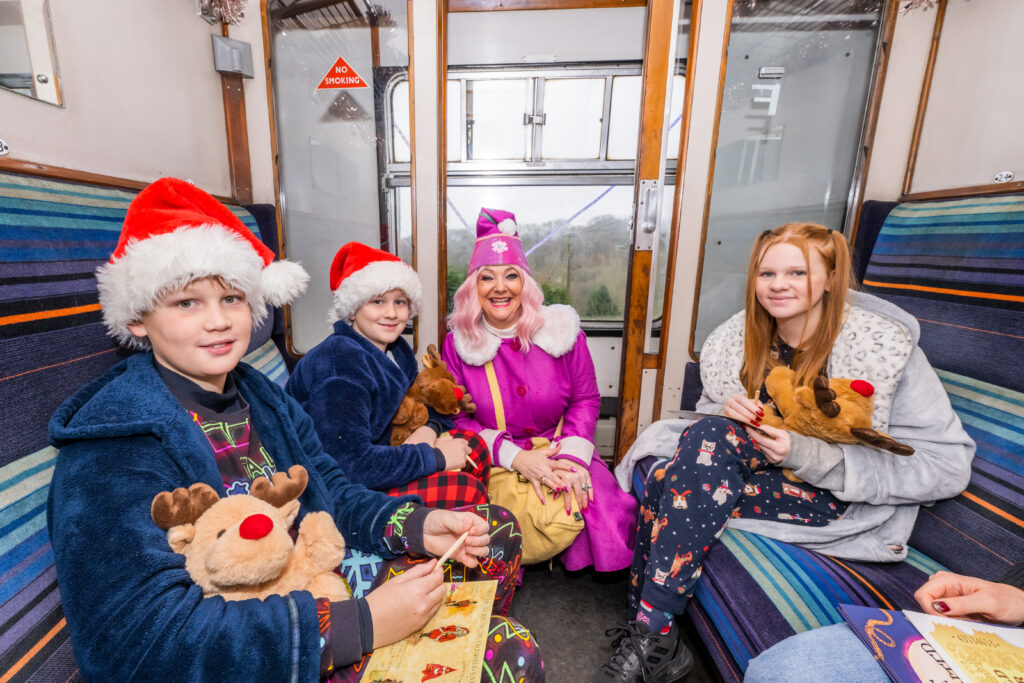
The Winter Steam Gala launches the 60th anniversary year on January 4 and 5 and will feature home locos including LMS Stanier Mogul 13268 and BR Standard 75069.
The annual Spring Steam Gala, from April 18 to 21, is a festival of the best engines from the home-fleet plus special guests. The Spring Diesel Festival follows, from May 15 to 18, with a variety of classes and traction types roaring through the Shropshire and Worcestershire countryside.
The immensely popular Step Back to the 1940s weekends – a staple of the SVR calendar for more than 20 years – are scheduled for June 7, 8, 14 and 15. Visitors are invited to dress in 1940s fashions as the SVR turns the clock back to celebrate the best of Britain on the home front. The Autumn Steam Gala is scheduled for September 18-21 and the Autumn Diesel Bash, for October 2-5.
In addition, back by popular demand will be the Open House Weekend, Model Railway Weekend, Brick Weekend, Vintage Transport Extravaganza, Singin’ on the Train and Ghost Trains.
There will also be new events celebrating SVR 60 and Railway 200 – the 200th anniversary of the birth of the modern railway with national celebrations planned.
A year packed with exciting events is in prospect. Into its seventh decade, Severn Valley Railway looks in rude health. On track for another 60 years….
Severn Valley Railway is always ready to welcome new volunteers. If what you have read has whet your appetite to get involved, please visit svr.co.uk and go to support/volunteer. Alternatively call 01562 757900, email contact@svrlive.com or write to Severn Valley Railway, 1 Comberton Place, Kidderminster, DY10 1QX.






